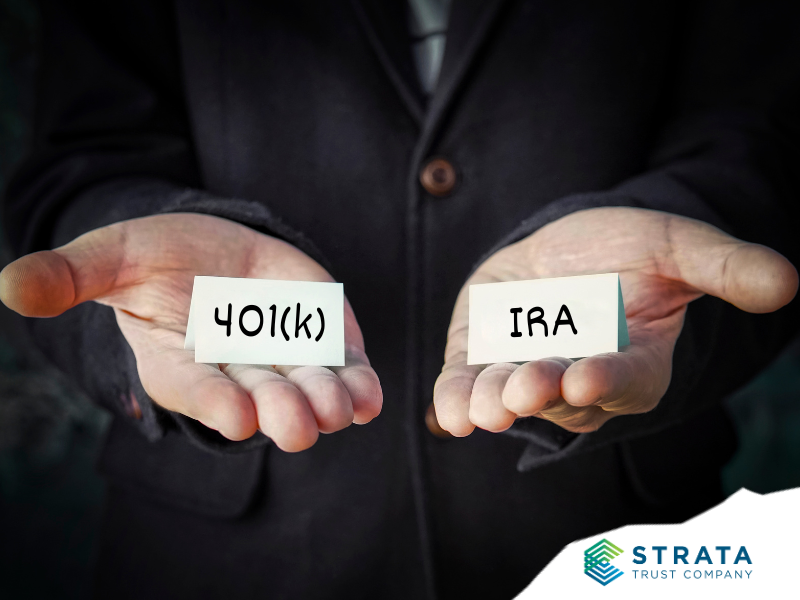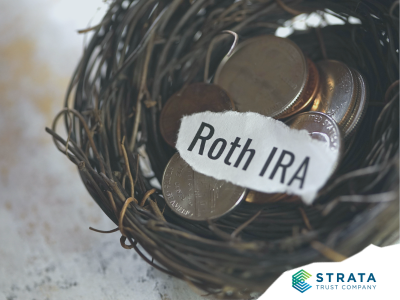Since first becoming available through the Revenue Act of 1978, 401(k) plans have become the predominant retirement plan for private-sector employers. IRAs have been around for even longer, since 1975. Over the years, both of these tax-favored savings vehicles have changed. At the outset, only those without a retirement plan at work were allowed to fund an IRA. Now IRAs are generally available to anyone with earned income. Roth IRAs—and 401(k) plans that allow for Roth contributions—give savers the benefit of potential tax-free earnings.
IRAs and 401(k)s offer distinct savings benefits, while some advantages overlap. So, this conversation may not be an IRA versus 401(k) debate, but rather a brief discussion of the merits of each type of plan. And while we will not cover all the details, we will try to touch on the most relevant pros and cons for each.
401(k) Plans: Bigger Contributions Come with Restrictions
Let’s start with the positives for 401(k) plans (and similar plans, such as 403(b) plans). Perhaps the most obvious advantage involves higher contribution limits. For 2023, those under age 50 can defer up to $22,500 of their own compensation. For 2024, the deferral limit increases to $23,000; those reaching age 50 in 2023 or 2024 may make a catch-up contribution up to $7,500.
Another important benefit associated with 401(k)s: participants may be eligible for employer profit sharing or matching contributions. Many employers with 401(k) plans encourage participant deferrals by offering matching contributions. Matching formulas differ considerably, and some plans are “deferral-only,” with no employer contributions.
| Example |
Danielle’s employer makes a 50% matching contribution on 6% of the participants’ compensation. Danielle makes $50,000, so 6% of her compensation equals $3,000. If she defers $3,000 (or more), Danielle’s employer will match 50% of her deferral by contributing $1,500 to her account. |
Other 401(k) benefits include:
- No income restrictions for making Roth deferrals
- Lower costs for participants (possibly)
- More investment options than IRAs at depository institutions
- More distribution options (e.g., loans and hardship distributions) than IRAs allow.
But 401(k) plans may also be less desirable than IRAs for some reasons, including more restrictions on distributions (for example, not allowing withdrawals until age 59½). They may also charge participants (especially former employees) more than IRA owners for comparable investments. And some 401(k)s actually have more investment restrictions than some IRAs, such as self-directed IRAs (SDIRAs).
IRAs: Lower Annual Limits with Big Benefits
For IRAs, the lower contribution limits could be considered a drawback. For 2023, the annual limit is $6,500 ($7,000 for 2024) and the catch-up contribution is $1,000 for both years. But on the flip side, IRAs can receive an unlimited amount of rollover contributions – so those changing jobs or retiring can move their 401(k) (or other eligible plan) assets into an IRA. Because of their popularity over the years, rollover contributions alone count for a significant portion of total IRA assets.
Another disadvantage of IRAs may be the perceived lack of investment options when compared to 401(k)s. There are two points to note here: first, the time deposit investments (i.e., CDs) that most depository financial organizations concentrate on can be helpful, especially for older savers who want guaranteed returns and FDIC insurance coverage. Second, leveraging self-directed IRAs can provide nearly limitless investment options, including real estate, promissory notes, LLCs, and more, so IRAs held in trust companies like STRATA may have many more investment options than what is available in most 401(k) plans.
There are other benefits associated with Roth and Traditional IRAs, including:
- Roth IRA ordering rules are more favorable than Roth 401(k) distribution rules.
- If you have earned income (or your spouse does), you can generally make a contribution (too much income may prevent Roth eligibility).
- For those who earn too much for an annual Roth IRA contribution, the “back-door Roth” may be an option.
- IRAs are not subject to the sometimes strict 401(k) withdrawal restrictions; IRA payments are “on demand” (but may be subject to an early distribution penalty).
Choosing the Right Option for You
Pointing out the pros and cons of 401(k)s and IRAs may nudge you toward one or the other. However, because both plan types have advantages and disadvantages, many retirement savers should consider contributing to both.
| Example |
In the example scenario above, Danielle may want to defer enough into her 401(k) plan to receive the maximum matching contribution. But she may also decide to contribute to a Roth IRA—if her 401(k) plan doesn’t have Roth contribution feature or simply because the Roth IRA distribution options are more favorable. |
In any retirement savings scenario, the best approach is saving early (or at least now), investing wisely, and not touching your assets until retirement age. This applies whether you decide to fund your employer-sponsored plan, a Roth IRA, or a Traditional IRA—or any combination of these plans. As far as investment options are concerned, STRATA provides a full array of self-directed IRA investment options that may help propel you toward retirement security. And of course, you should seek sound advice from a financial professional when deciding what would work best for your particular situation. Just remember, you don’t have to choose one or the other – IRAs and 401(k)s can provide retirement savings benefits.
Additional Resources
You can find more comparison factors for Traditional and Roth IRAs on our Types of SDIRAs webpage. Our Insights article, IRS COLA Changes for 2024, provides more details on contribution limits for each retirement savings option. For additional questions regarding STRATA investment options and/or IRA savings benefits, you can contact our self-directed IRA experts.









